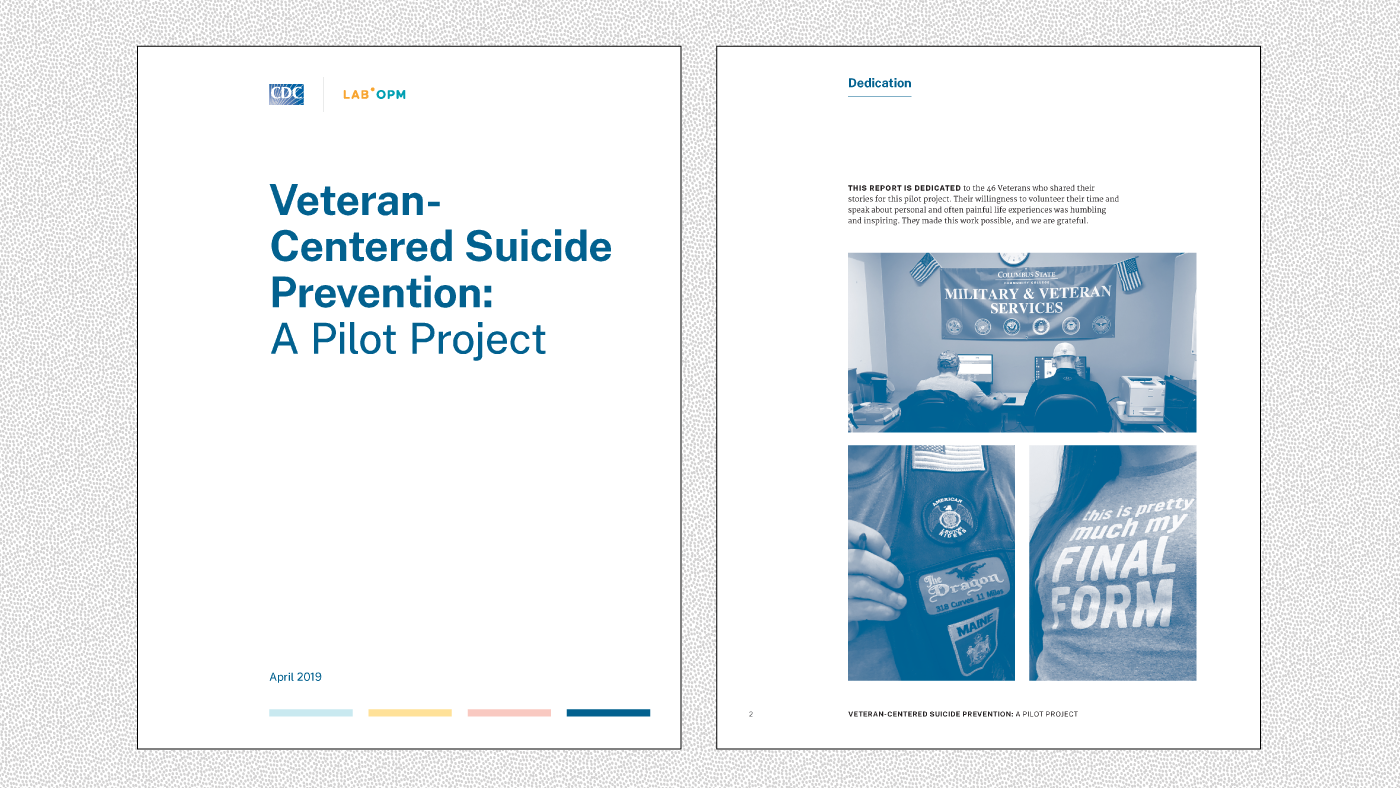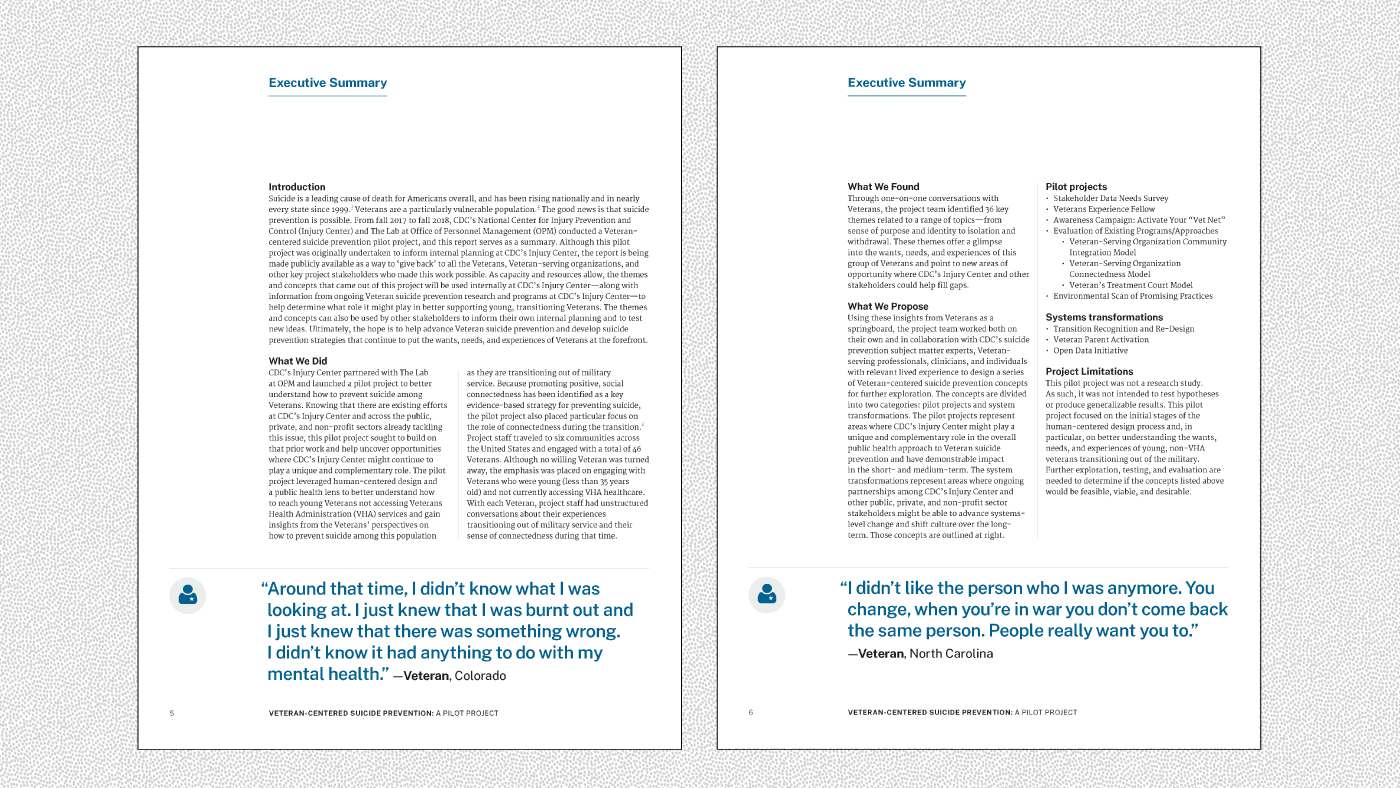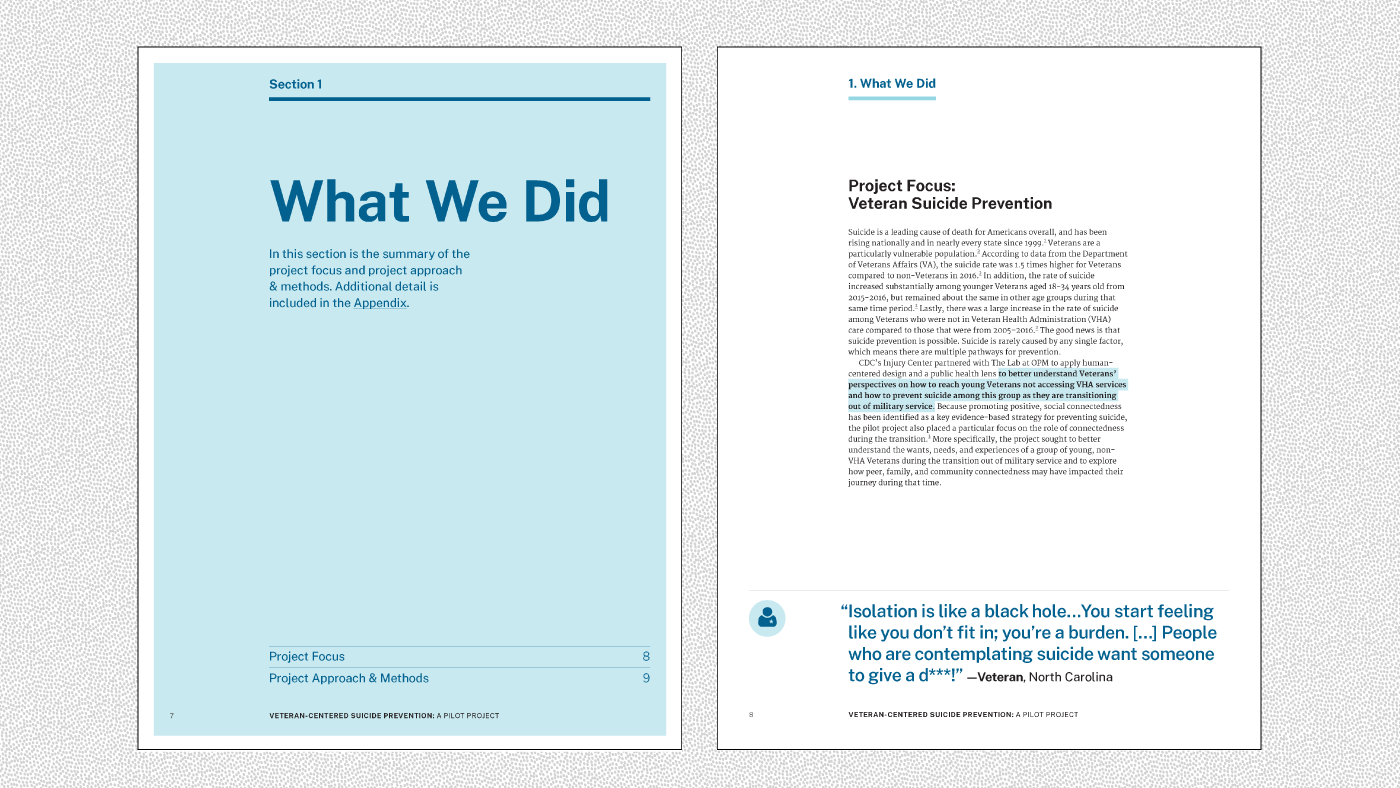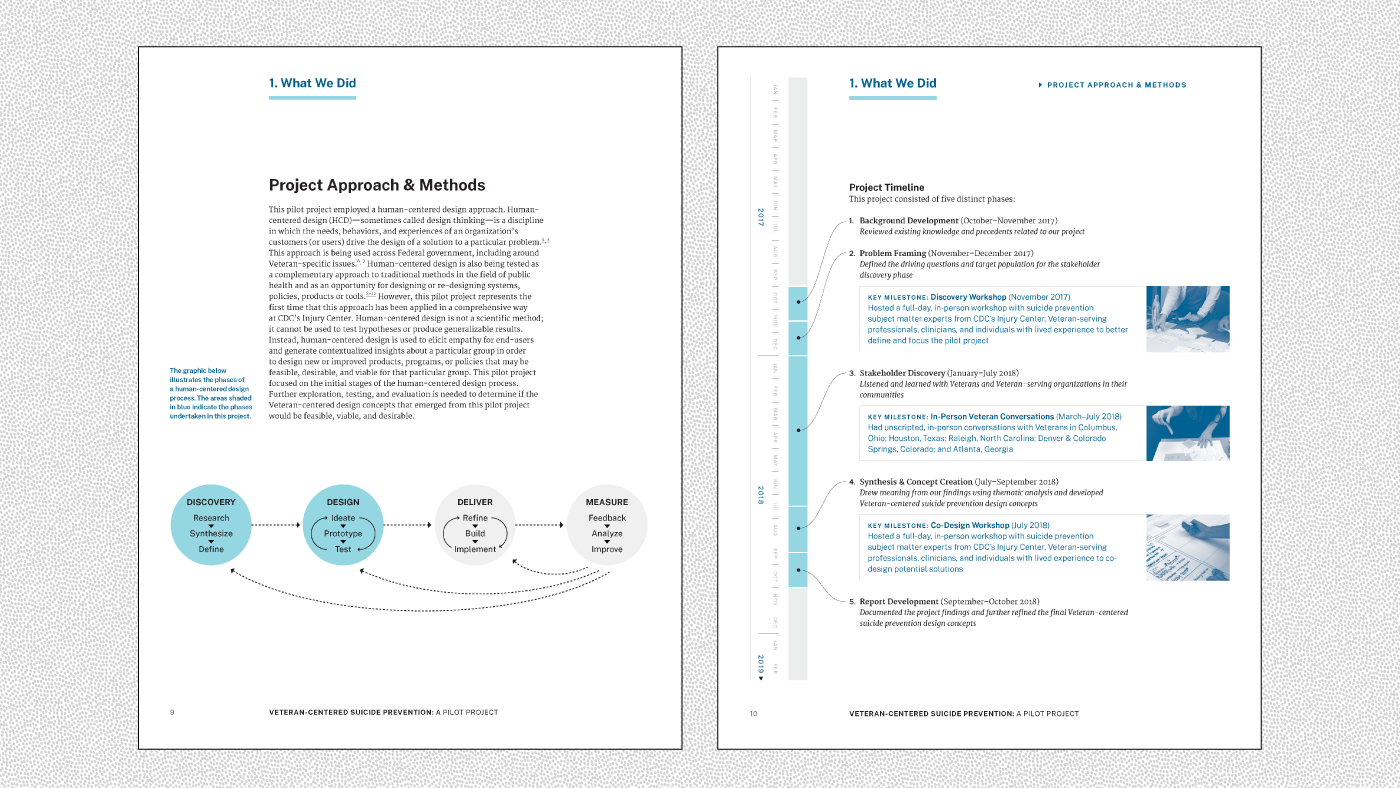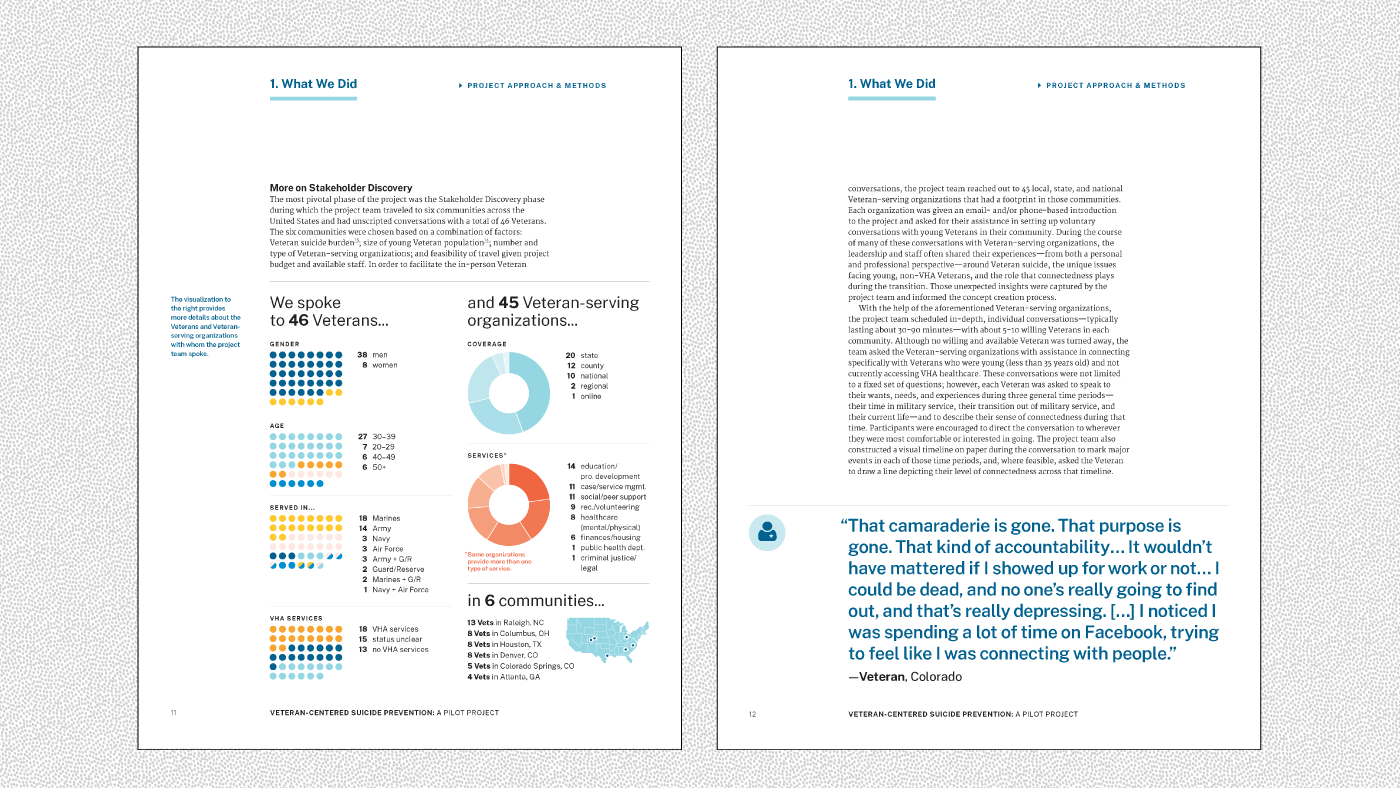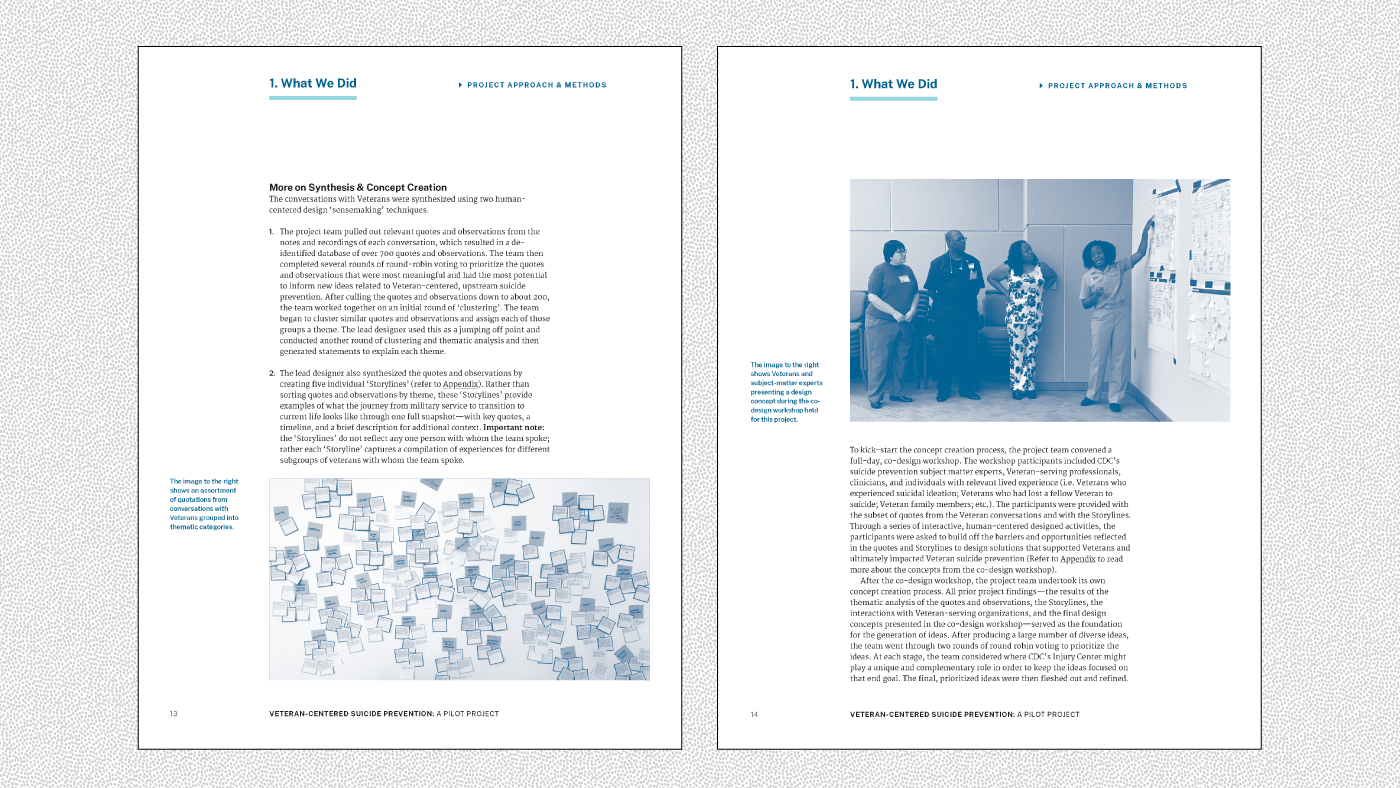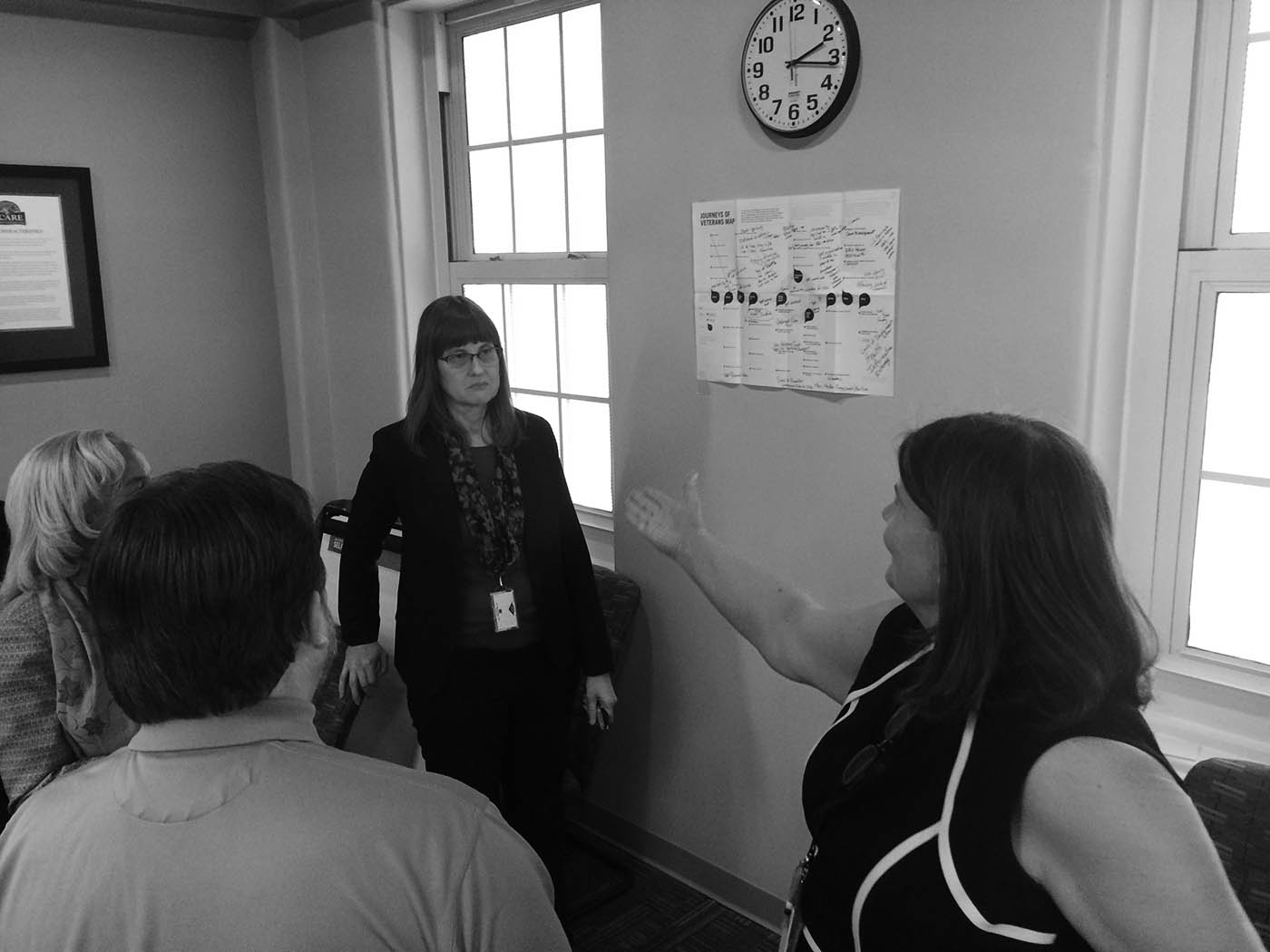CDC Injury Center + The Lab at OPM
Veteran-Centered Suicide Prevention
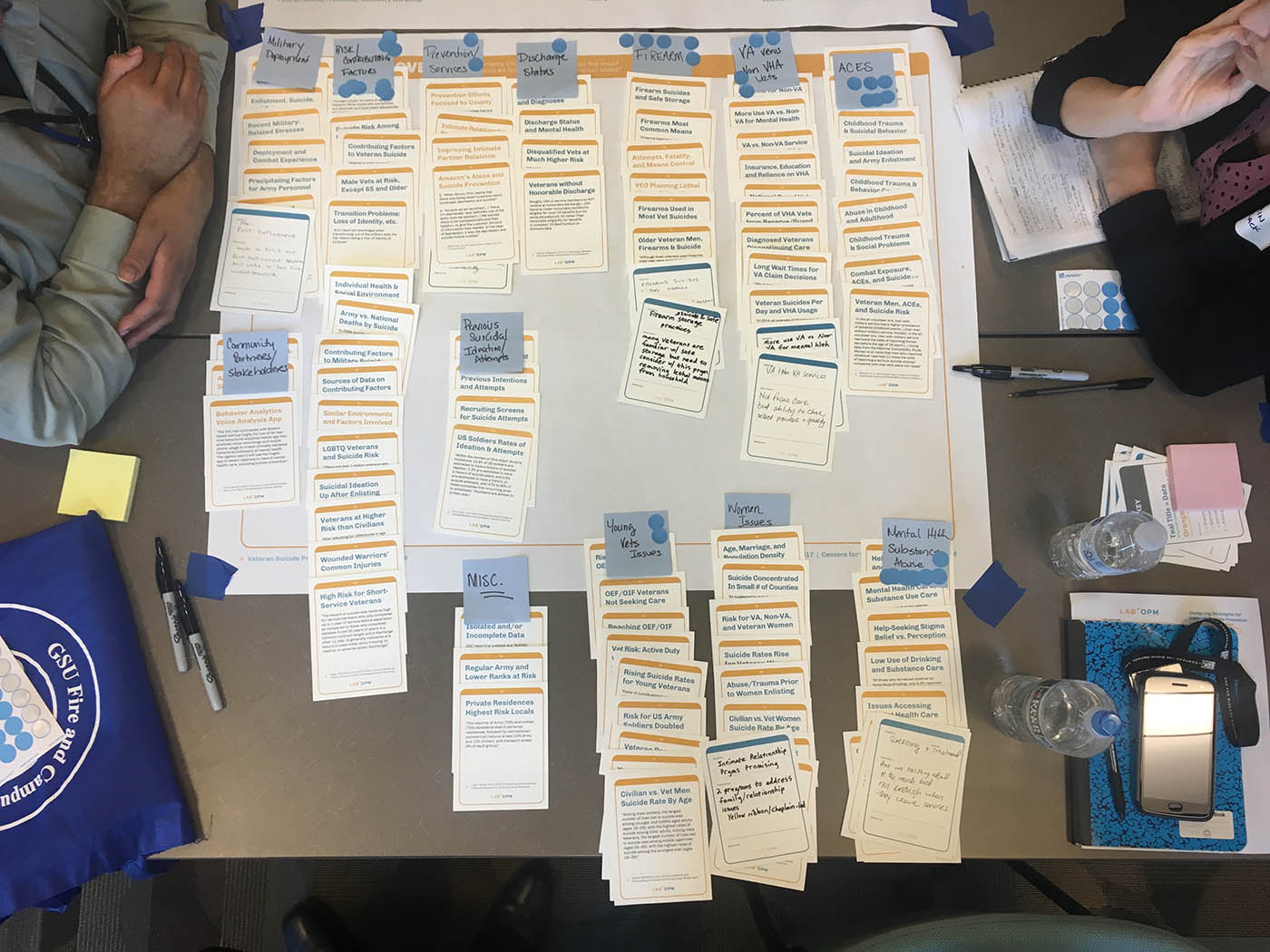
Card sort during the first CDC workshop of data pulled from our desk research.
Project Duration: 1 year
Project Type: Federal
Agency Partner: Centers for Disease Control (CDC) - Injury Center
Role: Service Designer
Stakeholders: Veterans, CDC
Design Phases: Research
Skills: Design Strategy, Research, Service Design
Design Output: Workshops, Veteran Suicide Prevention: A Pilot Project Report
Background
The CDC's Injury Center approached the Lab at OPM with a truly wicked problem: how to study and help stem, at a societal, systematic level, the alarming increase in suicide rates in the veteran population. In a one year research project, we visited 6 communities, spoke to 45 veterans about their emotional ups and downs from when the left service until now, and interacted with 46 veteran-serving organizations about how they meet and mitigate the risk of suicide every day.
Suicide prevention is a serious, complex public health issue. Because of this complexity, CDC's Injury Center was willing to try the application of Human-Centered Design to the research process. We worked with our partners at the Injury Center to show the scientists at the CDC, including their Institutional Review Board, that HCD is not a replacement or even a competitor for the Scientific Method; it is a complement to it. We didn't seek to create generalizable knowledge in the realm of suicide prevention; we sought to surface patterns and themes that might be not surface in a statistically significant, double-blind study model. Given this rationale and putting in place strict safeguards to protect the anonymity of those with whom we would speak, CDC at large allowed us to go ahead with this work.
Design Output
At the end of our year of study, the team produced the report below. We were ecstatic when CDC chose to fund one of our recommendations: an evaluation, from a public health perspective, of various veteran-serving organizations' community engagement models. Because preventing suicide most effectively means starting before a person feels isolated; it means bringing people into communities, and working to keep everyone engaged.
Designer's Note: Although this report was made publicly available by the CDC, because of the sensitive nature of much of this work, I am only including the opening section of our report.
You can read more about this work through this article from The Commons At the Centers for Disease Control (CDC), designing a better way forward for veterans"
